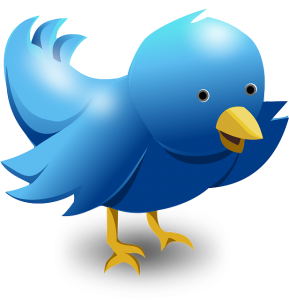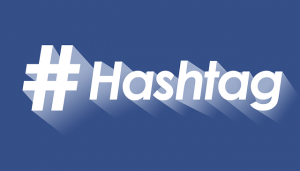Which of these 9 Twitter Fails Are You Making?
Learning to use social media for business is a completely different kettle of fish than using it for personal reasons, particularly when it comes to Twitter. That’s why it’s all too easy to make mistakes without realising it and struggle to get momentum with your Twitter marketing strategy.
I often see Twitter mistakes as I use Twitter so much for myself and my clients, so I wanted to share with you my 9 top fails that I see, and what you can do to avoid them.
1 – Looking like a spam account
To avoid looking like a spammer you need to set your Twitter account up correctly, otherwise you run the risk of being suspended or put in “Twitter jail”. Things to avoid include:
Using numbers in your name – Twitter bots often have names like John4566557889. If your preferred name is taken, try to think of something else rather than adding numbers to the end.
Not filling in the profile – particularly the picture. Do add a picture and fill in the bio with as much info as possible including the link to your website.
Posting too much – if it looks like you’re posting too much or too quickly your account might be flagged as spam. Several posts a day plus interactions with others/retweets is the aim rather than flooding your account with lots of posts in one day.
 2 – Infrequent posting
2 – Infrequent posting
The other side of the coin to posting too much is not posting enough.
This is often the case when you simply don’t have the time to be on Twitter several times a day and so only post when you can, unfortunately Twitter is so fast paced with a constantly changing feed that even a day away can affect your results. Not posting for several days can spell disaster.
The best way around this is to batch write and schedule your posts in advance or hire a Twitter marketing manager like me to look after your account for you.
3 – Scheduling for live events
There is a downside to scheduling however, and that’s when you schedule a post in advance for a live event that you don’t actually attend.
This usually happens with Twitter networking hours. You make a “hello” post and schedule it, lots of people respond but you’re not there to reply to them. It can look like you don’t want to make the effort, and this may be detrimental to your reputation.
Hashtag hours and Twitter events can work remarkably well for networking and other opportunities but just like networking in real life, it’s all about making connections in real time and building trust. So only take part when you can commit to real-time interaction.
4 – Not responding to notifications
And on that note, not responding to notifications is yet another Twitter fail I see on a regular basis.
Scheduling is a great way to maintain a consistent presence and I do recommend it, but you must check in at least once a day and respond to any notifications you receive. Whether it’s a like, retweet or a follow back; responding promptly shows that you’re a real and credible business owner, not a spammer or bot.
It’s always worth thanking new followers for their follow and asking a “get to know you” question where possible as it shows you care about the people who follow you.
5 – Not following back
 There are some accounts with hundreds of followers, yet they only follow a handful of other accounts, and quite frankly, it’s bizarre!
There are some accounts with hundreds of followers, yet they only follow a handful of other accounts, and quite frankly, it’s bizarre!
If you’re using Twitter “for the numbers” then it’s the wrong approach to be taking. You’re giving out signals that quantity matters over quality, and that method seldom yields good results when it comes to marketing (and why buying followers is another Twitter fail to avoid).
When you get a follow, even if you don’t feel they’re relevant to you and what you do, make sure you follow back! As they say in the networking world, it’s not what they can do for you but who they know that can bring the opportunities your way.
The only time to avoid following back is if it looks like a spam account, a bot, or they post/retweet inappropriate content.
6 – Avoid retweeting inappropriate content
I know it goes without saying that inappropriate content should never be shared on social media that has a 13+ age range (i.e., Twitter) but you might need to decide what’s inappropriate for your business too.
Things that might be inappropriate will depend on your target audience and why it is so important to do your research. They might not feel wrong to you at all! You have to remember that it’s your audience’s impression of you that counts here, and your marketing persona is usually very different to who you are as an individual.
Things that may fall into the inappropriate category include:
- Political posts
- Anything to do with protected characteristics, i.e., race, gender, sexuality, age, disability, religion/beliefs
- Controversial opinions (for example, personal views on vaccination could lose you potential customers/followers, if it isn’t relevant to your business keep it to your personal accounts)
- 18+ content
Obviously, if your business is based on one of these areas, such as LGBTQ+, disability, etc then it’s fine to share content to do with that. It’s up to you to decide what’s appropriate/inappropriate for your target audience and take it from there.
7 – Not curating content carefully
What you share on social media is important and Twitter is no exception.
It’s important to plan your content carefully and ensure it has a purpose – to explain, to interact, to promote are the usual three aims to choose from. You ideally want a good mix of the three rather than purely posting “sales” type posts.
This is why it’s a good idea to share your blog posts on Twitter, ask questions, get to know your followers, share what you get up to, inspirational quotes, etc alongside your promotional tweets. That also means knowing the kind of content your target audience want to see – sharing inspirational stories about athletes might not be appropriate if you’re selling baby clothes!
Remember to carefully choose your images too. Make sure your product photography shows your products in the best light possible, and that any stock images you choose are relevant to the tweet. If it looks bad or irrelevant, your audience aren’t going to read it.
8 – Using hashtags incorrectly
 Hashtags are important at getting your tweet noticed by the right people but using them incorrectly can make your tweets look spammy or attract entirely the wrong audience!
Hashtags are important at getting your tweet noticed by the right people but using them incorrectly can make your tweets look spammy or attract entirely the wrong audience!
I shared a blog post on “What are hashtags and where should I be using them” so I’m not going to go into great detail here, other than point out how a hashtag can be used incorrectly.
Using the wrong hashtags is the most common example. If a hashtag is for virtual market for crafters for example, then you wouldn’t use it if you deliver virtual assistant services. Adding hashtags just to get more attention is a bad idea too, if the hashtag isn’t directly relevant to the tweet don’t use it.
Hashtags need to be relevant, specific and add something to your tweet. If they don’t, think twice about using them!
9 – Expecting instant results from Twitter
I think the biggest fail I see with people using Twitter for their marketing is expecting to get fast results from their tweets. All too often I hear complaints that no one has bought anything after a product has been promoted for a week, or that their inbox isn’t full of DMs from people interested in their services.
Social media doesn’t work this way, especially with Twitter.
You’re using Twitter to raise brand awareness, credibility and interact with your target audience and all of these things take time to get to a high enough level for people to trust you enough to buy from you. Instant results *may* happen but it’s highly unlikely, so if you’re expecting this then you’re certainly setting yourself up to fail.
So, there you have them, nine Twitter fails you might be making with your marketing today. The good news is that you can recover from your mistakes and put things right again quickly. If you need some guidance with that, don’t hesitate to get in touch!



Leave a Reply
Want to join the discussion?Feel free to contribute!